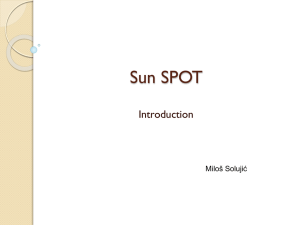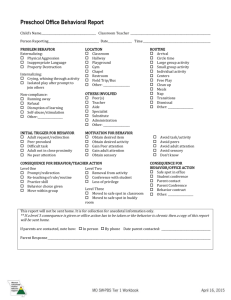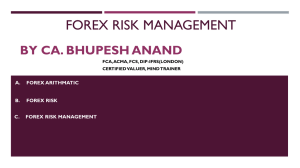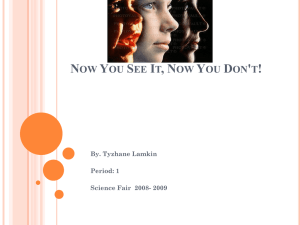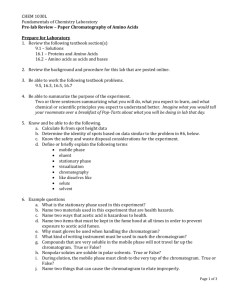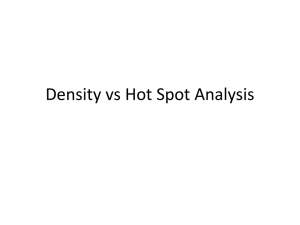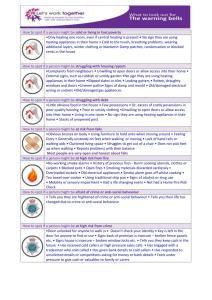1. Question 13, chapter 5 (a) Calculate the missing spot rates. First
advertisement
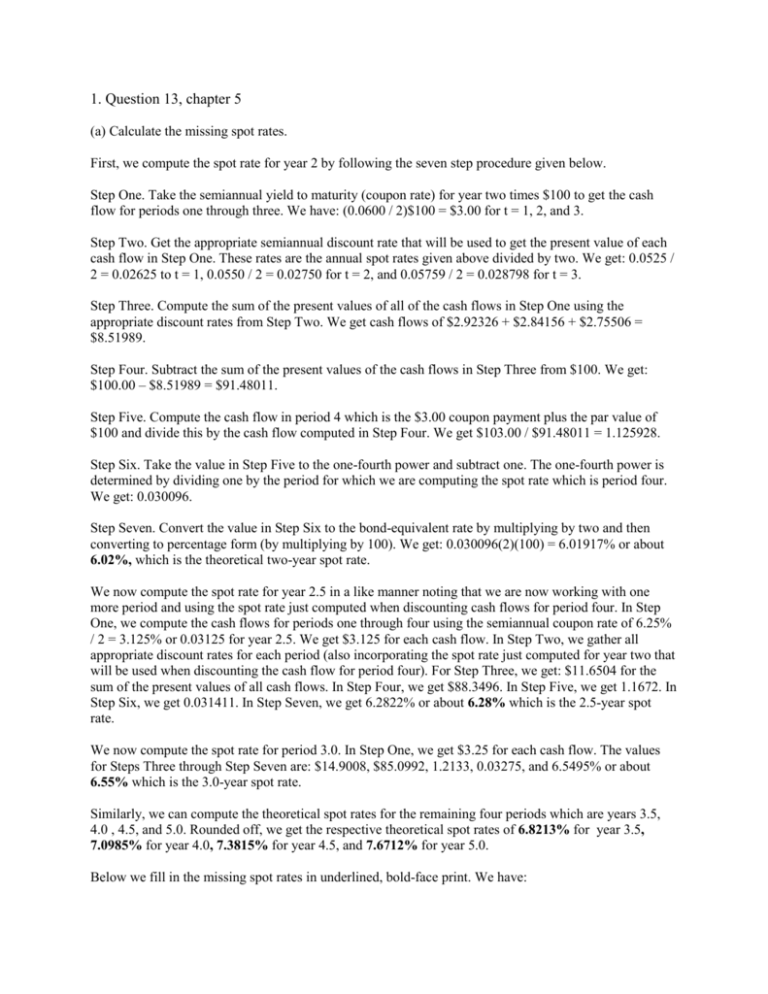
1. Question 13, chapter 5 (a) Calculate the missing spot rates. First, we compute the spot rate for year 2 by following the seven step procedure given below. Step One. Take the semiannual yield to maturity (coupon rate) for year two times $100 to get the cash flow for periods one through three. We have: (0.0600 / 2)$100 = $3.00 for t = 1, 2, and 3. Step Two. Get the appropriate semiannual discount rate that will be used to get the present value of each cash flow in Step One. These rates are the annual spot rates given above divided by two. We get: 0.0525 / 2 = 0.02625 to t = 1, 0.0550 / 2 = 0.02750 for t = 2, and 0.05759 / 2 = 0.028798 for t = 3. Step Three. Compute the sum of the present values of all of the cash flows in Step One using the appropriate discount rates from Step Two. We get cash flows of $2.92326 + $2.84156 + $2.75506 = $8.51989. Step Four. Subtract the sum of the present values of the cash flows in Step Three from $100. We get: $100.00 – $8.51989 = $91.48011. Step Five. Compute the cash flow in period 4 which is the $3.00 coupon payment plus the par value of $100 and divide this by the cash flow computed in Step Four. We get $103.00 / $91.48011 = 1.125928. Step Six. Take the value in Step Five to the one-fourth power and subtract one. The one-fourth power is determined by dividing one by the period for which we are computing the spot rate which is period four. We get: 0.030096. Step Seven. Convert the value in Step Six to the bond-equivalent rate by multiplying by two and then converting to percentage form (by multiplying by 100). We get: 0.030096(2)(100) = 6.01917% or about 6.02%, which is the theoretical two-year spot rate. We now compute the spot rate for year 2.5 in a like manner noting that we are now working with one more period and using the spot rate just computed when discounting cash flows for period four. In Step One, we compute the cash flows for periods one through four using the semiannual coupon rate of 6.25% / 2 = 3.125% or 0.03125 for year 2.5. We get $3.125 for each cash flow. In Step Two, we gather all appropriate discount rates for each period (also incorporating the spot rate just computed for year two that will be used when discounting the cash flow for period four). For Step Three, we get: $11.6504 for the sum of the present values of all cash flows. In Step Four, we get $88.3496. In Step Five, we get 1.1672. In Step Six, we get 0.031411. In Step Seven, we get 6.2822% or about 6.28% which is the 2.5-year spot rate. We now compute the spot rate for period 3.0. In Step One, we get $3.25 for each cash flow. The values for Steps Three through Step Seven are: $14.9008, $85.0992, 1.2133, 0.03275, and 6.5495% or about 6.55% which is the 3.0-year spot rate. Similarly, we can compute the theoretical spot rates for the remaining four periods which are years 3.5, 4.0 , 4.5, and 5.0. Rounded off, we get the respective theoretical spot rates of 6.8213% for year 3.5, 7.0985% for year 4.0, 7.3815% for year 4.5, and 7.6712% for year 5.0. Below we fill in the missing spot rates in underlined, bold-face print. We have: Year (Period) Yield to Maturity 0.5 (1) 1.0 (2) 1.5 (3) 2.0 (4) 2.5 (5) 3.0 (6) 3.5 (7) 4.0 (8) 4.5 (9) 5.0 (10) 5.25% 5.50% 5.75% 6.00% 6.25% 6.50% 6.75% 7.00% 7.25% 7.50% Spot Rate Year (Period) Yield to Maturity Spot Rate 5.25% 5.50% 5.76% 6.02% 6.28% 6.55% 6.82% 7.10% 7.38% 7.67% 5.5 (11) 6.0 (12) 6.5 (13) 7.0 (14) 7.5 (15) 8.0 (16) 8.5 (17) 9.0 (18) 9.5 (19) 10.00 (20) 7.75% 8.00% 8.25% 8.50% 8.75% 9.00% 9.25% 9.50% 9.75% 10.00% 7.97% 8.27% 8.59% 8.92% 9.25% 9.61% 9.97% 10.36% 10.77% 11.20% (b) What should the price of a 6% six-year Treasury security be? We compute the price of the 6% six-year Treasury security. The price of this security is the present value of its cash flows. Per $100 par value, the semiannual coupon payment is $100(0.06 / 2) = $3.00. There will be twelve payments of $3.00 plus the payment of the par value of $100 received at the end of period twelve. The appropriate discount rates for each of the twelve cash flows are the twelve spot rates that correspond to each of the twelve periods when cash flows are received. The present value of the twelve respective cash flows is: $2.4361, $2.3680, $2.2959, $2.2204, $2.1418, $2.0605, $1.9769, $1.8913, $1.8042, $1.7158, $1.6267, and $1.5370. The present value of the $100 par value discounted at the theoretical spot rate of 4.1370% is $61.4808. Thus, the price of a 6% six-year Treasury security should be $88.8716 or about $88.87. (c) What is the six-month forward rate starting in the sixth year? The six-month forward rate for period twelve can be computed by knowing the spot rates for periods twelve and thirteen. The 6-year spot rate at the beginning of year six (or period twelve) is 8.27%. The semiannual rate is 4.135%. The 6.5-year (or period-13) spot rate is 8.59% with a semiannual rate of 4.295%. The six-month forward rate at the start of the sixth year or twelfth period (f12) is the rate that will satisfy the following equation: (1.04295) (1 y ) 1 . Inserting in our values, we get: f12 = 1 = 12 12 (1 y ) (1.04135) 1.727529 1 = 1.0623428 – 1 = 0.0623428 or about 6.2343%. 1.6261502 13 13 f12 = The bond equivalent yield is 2(0.0623428) = 0.1246856 or about 12.4686%. [NOTE. We can check this out by considering two equal investment plans for a $100. The first plan is to invest $10,000 at the semiannual 6-year spot rate for 12 semiannual periods and then reinvest this amount at the six-month forward rate starting in year six. We get: $10,000(1.04135)12(1.062343%) = $17,275.29. The second plan is to invest $10,000 for 6.5 years at the 6.5-year semiannual spot rate, which is $10,000(1.04295)13 = $10,000(1.727529) = $17,275.29.]


